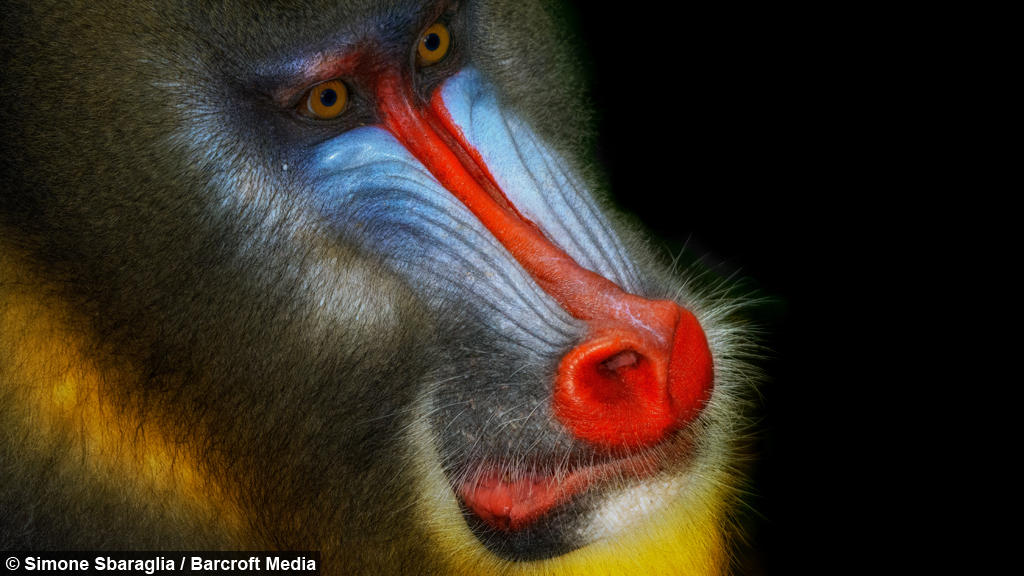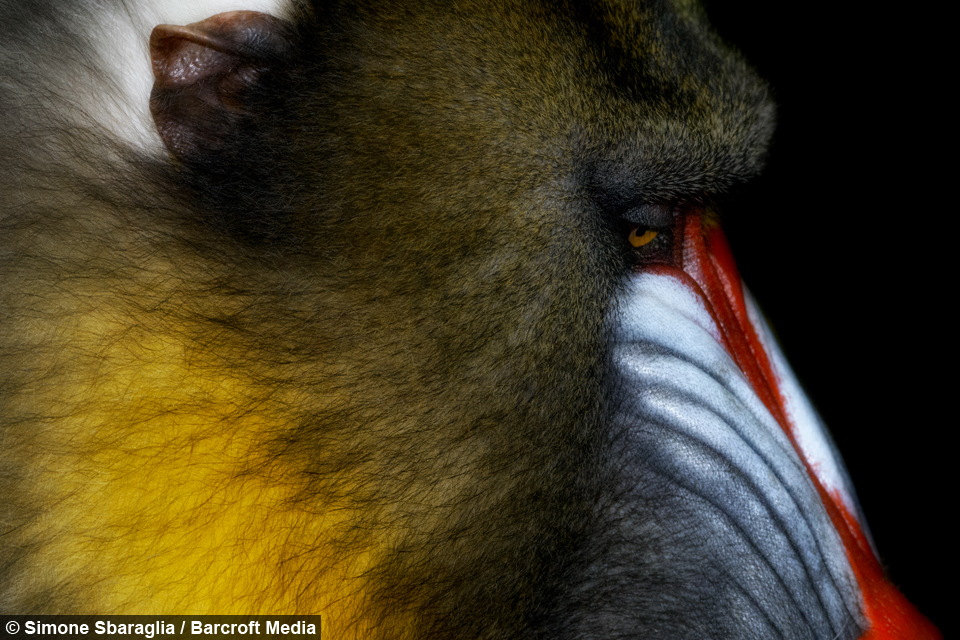Chasing Mandrills in Gabon: up close and personal with the world's largest monkeys
By Crystal Chung @CrystalkChung
Scroll down for the full story
Shot in Lekedi Park, Gabon by university professor, Simone Sbaraglia, the photos aim to focus on the beauty of the animals.
The 42-year-old photographer said: “I have always been fascinated by the mandrills, especially the males with their striking colours and lines.
“My goal was to abstract them from the surrounding and to draw the attention to the perfection of their lines and colours. I try to focus on abstracting the geometric beauty of my subjects.”
Although the large animals may look quite menacing and daunting in the images, Sbaraglia insists that they are good natured animals and he was able to get within touching distance.
“Mandrills live in groups of many individuals, up to several hundreds. They are generally non-aggressive and over the course of three weeks I was able to get very close to them, within touching distance.
“I always try to get as close as possible to the animals that I photograph, and I do so by allowing them time to get used to my presence. I followed the same group for about three weeks, with the help of some local rangers and researchers, until they finally allowed me to get as close as I wanted.”
“I am never afraid of the animals that I photograph. I know that the event of an aggression is extremely rare, especially if you are careful to recognise any sign of stress from the animal and act accordingly.”
Although the professor from Rome, Italy did not face any fears when up close with the colourful primates, he did however encounter other jungle difficulties in the form of ants and mosquitoes.
He said: “The bugs in the jungle just eat you alive, I had so many mosquito bites on my arms and face that I developed an allergic reaction and had to take some medication to avoid further complications. As I got back home I realised that I had been bitten by thousands of tiny ticks, most of them still attached to my body."
Mandrills are known to be the largest monkeys in the world with the males being bigger than the females and also easier to recognise due to their bright red and blue nose.
Mandrills live in mixed groups which are led by one dominant male and often they will aggressively defend their group against rival males or attackers.
The fortunate snapper said: “It is a great feeling when you are finally allowed to get so close to a wild animal. It feels that you have been accepted, that you are no longer perceived as threat. This is what allows me to take more intimate portraits that would never be possible from a distance.”









